Every foreigner in Japan who wants to take university entrance exams or apply for a job needs a JLPT (Japanese Language Proficiency Test) certificate. The JLPT is one of the most respected and recognized Japanese language proficiency tests for foreigners.
The exam consists of five levels, with N5 being the lowest level and N1 being the highest level. We have compiled a complete description of the 5 levels of the JLPT in this article. Hopefully, this article will help you decide which level to take and how to prepare for the test. Cheer up!
What is the JLPT?
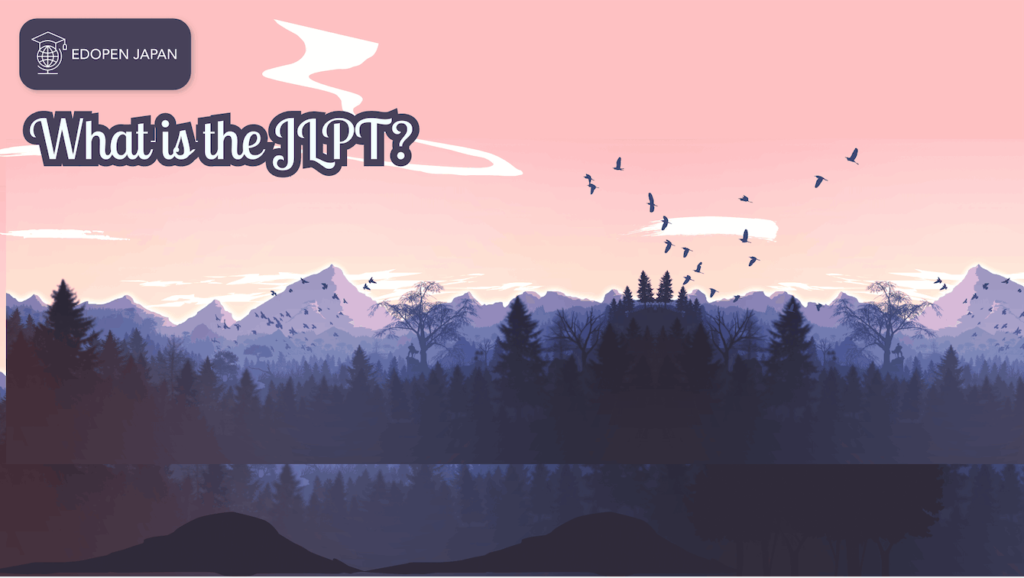
JLPT stands for Japanese Language Proficiency Test or in Japanese it is called “日本語能力試験ーNihongo Nouryoku Shiken”. A Japanese language test is designed for people whose native language is not Japanese. The most widely taken Japanese language test in the world was first administered in 1984, and in 2018 it was taken by approximately 1 million test-takers. The JLPT has been taken by candidates from 62 countries. Normally, this JLPT is held twice a year, usually on Sunday, the first week of July and December.
We can assume that this is actually another kind of language proficiency test. The JLPT has 5 levels, namely N1, N2, N3, N4 and N5. N5 is the lowest (easiest) level and N1 is the most difficult level. Anyone planning to study or work in Japan should consider taking the JLPT. The JLPT result (certificate) will be used as a reference by various parties in evaluating you, such as when entering Japanese universities and vocational schools, applying for jobs in Japanese companies, receiving salary increases or promotions, and many other benefits if you have this certificate.
The JLPT is centrally administered by The Japan Foundation and Japan Educational Exchanges and Services. The JLPT is one of the most affordable foreign language tests, with prices remaining almost unchanged at around 5000 JPY.
Let’s take a closer look at the different levels of the JLPT below:
JLPT N1

JLPT N1 is the most difficult level and is therefore considered an advanced level. Although levels N2 and N1 are considered advanced levels, the JLPT N1 exam is much more difficult than the JLPT N2 exam. Before registering for the JLPT N1 exam, candidates are required to master approximately 10,000 Japanese vocabulary words and 2,000 Kanji characters and to have studied Japanese for more than 900 hours.
The sessions in the N1 JLPT test are:
- Knowledge of language and reading in 110 minutes.
- Listening in 60 minutes.
Compared to the duration of the JLPT N5-N2 exam, the JLPT N1 exam has the longest duration. Since the first session is quite long, almost 2 hours, the examinee must be able to concentrate on answering the questions and must be able to manage the time to answer the questions. The minimum score required to pass the JLPT exam varies depending on the level of the exam you are taking. The minimum score required to pass the JLPT N1 is 100 out of a total of 180.
The JLPT N1 passing standard is divided into three parts, just like the JLPT Level N3 and N2 exams:
- Vocabulary and kanji sessions: at least 19 out of a total score of 60
- Grammar and reading sessions: at least 19 out of a total score of 60
- Listening session: a minimum of 19 out of a total score of 60
Even if you score over 100, if you score below the standard in any of the exam sessions, you will be declared a failing candidate. You should try to achieve the standard score. Then, if you can answer 56% of the questions, you will certainly pass. Don’t make this exam a burden because the passing standard is not high, right? Please do not misunderstand.
As explained above, the JLPT N1 exam is the most difficult of the JLPT levels. The difficulty level of this exam is also much higher than the JLPT N2 exam. Even if a student achieves a satisfactory score on the JLPT N2 exam, he or she may not be able to pass the JLPT N1 exam with ease.
The questions that appear or the language used in the JLPT N1 exam is the standard language or written language that is usually found in academic texts as well as opinions or newspaper news. The listening section is also very different in difficulty from the JLPT N2 exam. Many of the phrases used are more implicit and the information conveyed is also very fast.
According to the experience of several examinees who have passed N1, as is the tendency with other exams, the most difficult session is said to be the vocabulary session. It seems reasonable to say that this early session was the most difficult because N1’s vocabulary was very broad and very large. However, opinions about the difficulty of the Reading and Listening sessions seem to vary. Some say that the Listening session is the easiest compared to the other sessions, and some can get the best score in the Reading session.
If you are used to reading books or academic texts in Japanese, you will have no difficulty in answering the reading section. Then, if you can listen to the explanation of academic material in Japanese, the examinee may not find it difficult to answer the listening section. Then, to be able to answer the first section, especially the vocabulary section, the only way is for test takers to try to increase their knowledge about it.
As the perfect study buddy to conquer the N1 level, we highly recommend that you read our article 10 Most Famous & Powerful Textbooks to Pass JLPT N1 to learn about the super complete materials required.
JLPT N2
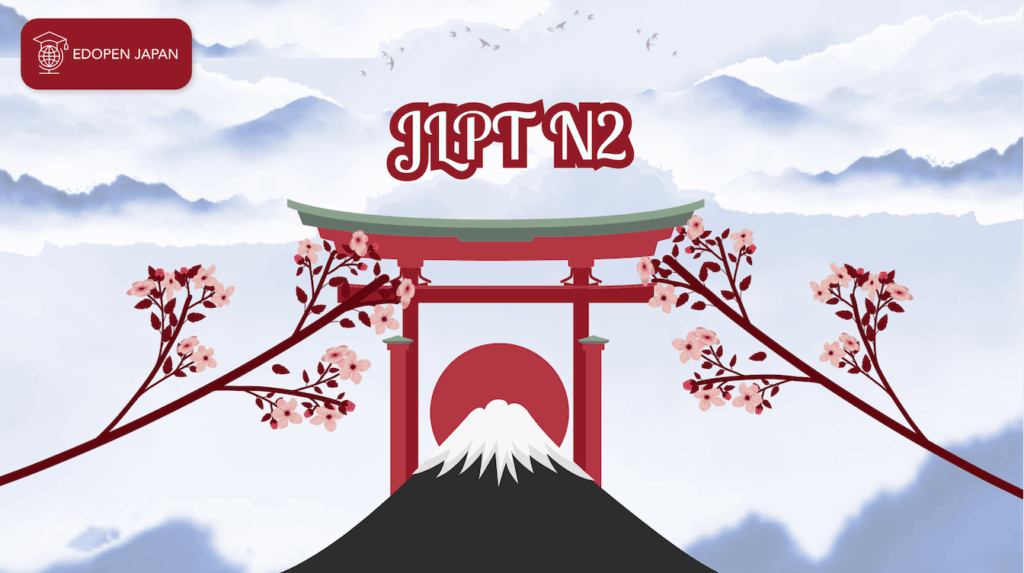
The JLPT N2 exam is at the advanced level, which is certainly more difficult than the JLPT N3 exam. In order to pass the JLPT N2 exam, test takers are expected to have mastered approximately 6,000 Japanese vocabulary words, and approximately 1,000 Kanji characters, and to have studied Japanese for more than 600 hours before taking the exam.
As opposed to the number of sessions required for levels N5 through N3, the JLPT N2 exam consists of the following sessions
- Language knowledge combined with reading in 105 minutes
- Listening in 50 minutes
When comparing the duration of the JLPT N5 to the JLPT N3, the JLPT N2 is longer. In addition, the JLPT N2 includes sessions on Japanese knowledge and reading skills. Because there are only two sessions, and the first session is long, it is hoped that examinees will try to stay focused and concentrated during the exam.
The minimum score required to pass the JLPT exam varies depending on the exam taken. The minimum score to pass the JLPT N2 is 90 out of a total of 180.
In order to achieve this score, it is also important to understand that each exam session also has a minimum passing score standard. If the score is below the passing standard in any of the exam sessions, the examinee is considered to have failed.
Although there are only two sessions in the test, the passing standard assessment is divided into three sessions. As with the JLPT N3 passing standards, the JLPT N2 passing standards are divided into three sessions as follows:
- Vocabulary and kanji sessions: at least 19 out of a total score of 60
- Grammar and reading sessions: at least 19 out of a total score of 60
- Listening session: a minimum of 19 out of a total score of 60
The passing standard is 50% of the total score!
As written in the previous articles N5 through N3, the easy and difficult parts seem to vary from person to person. Some find the listening section relatively easy and vice versa. Please note that the JLPT N2 exam is far more difficult than the JLPT N3. The vocabulary used in the JLPT N2 exam will certainly be much more complicated and varied than the N3 vocabulary, so even if you pass the N3 exam, you may not be able to answer the questions on the N2 exam easily.
Based on the experiences of several JLPT N2 tests-takers who were able to pass the exam, it is said that the easiest part of the JLPT N2 exam is the listening session. They said that the listening section of the JLPT N2 exam was not as difficult as one might think. However, on the other hand, they think that the first session exams; Kanji, Vocabulary, Grammar, and Reading, are very difficult. Even being able to answer a third of the questions in the first session was difficult. For this reason, those who feel this way might be better off trying to maximize their scores in the listening session. This is because even if you can only answer a third of the questions in the Kanji/Vocabulary/Grammar and Reading sessions if you can get a very good score in the Listening session, you will certainly pass the exam.
See also:
JLPT N3
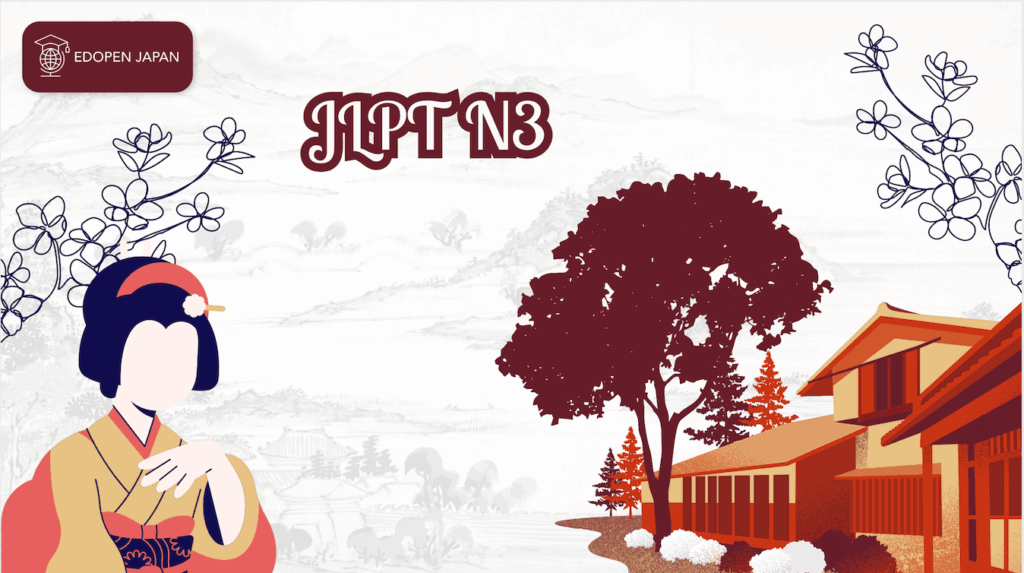
The JLPT N3 exam is classified as an intermediate level and is obviously a more difficult level than the N4 exam. JLPT N3 candidates are expected to have mastered approximately 3,500 Japanese vocabulary words and 700 Kanji characters, and to have studied Japanese for approximately 500 hours.
There are three sessions in JLPT N3:
- Vocabulary and Kanji in 30 minutes.
- Grammar and Reading in 70 minutes
- Listening in 40 minutes
Compared to the JLPT N5 and N4 exams, the JLPT N3 exam has a longer duration. Students must be able to maintain concentration throughout the exam. The minimum score required to qualify for the JLPT exam varies by level. The minimum score required to pass the JLPT N3 is 95 out of a total of 180.
In addition to meeting these scores, it is important to note that each exam session also has a passing standard. If a candidate scores below the passing standard in any session, he or she is considered a failed candidate. For the JLPT N3 exam, the passing standard is divided into three parts as follows
- Vocabulary and kanji sessions: at least 19 out of a total score of 60
- Grammar and reading sessions: at least 19 out of a total score of 60
- Listening session: a minimum of 19 out of a total score of 60
The JLPT N3 exam will be much more difficult than the JLPT N4 exam. In the JLPT N3 exam, many sections can be considered easy and others difficult. All exam questions, from vocabulary, kanji, grammar, reading, and listening, will be more varied and difficult than the basic level (N5 and N4). If you can pass the JLPT N4 with a score that is too close to the graduation standard, it’s better to prepare yourself better by taking the time to learn more Japanese.
For the JLPT N3 book guide, you can refer to our reference 10 Most Powerful & Popular Textbooks to Pass JLPT N3
JLPT N4
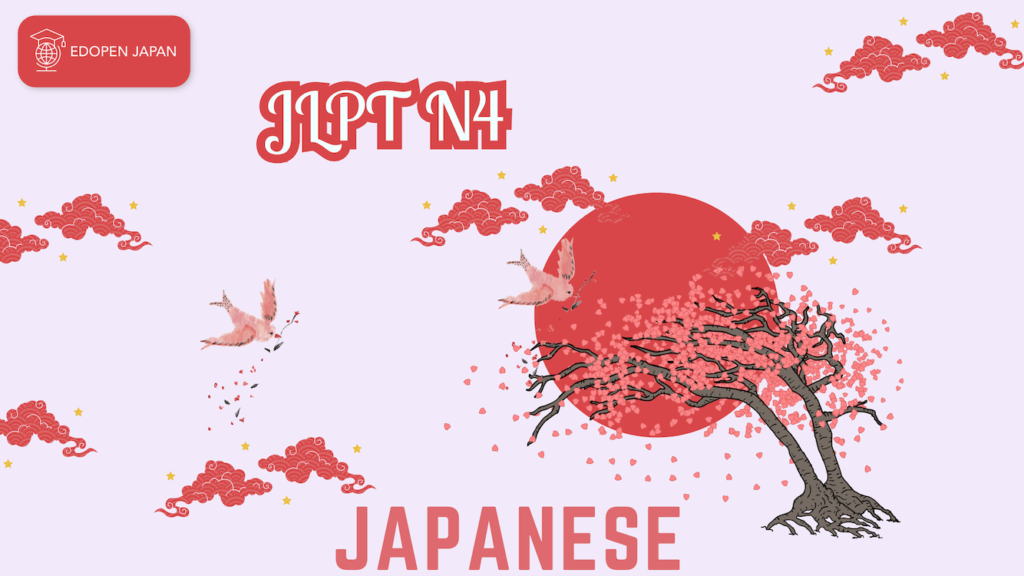
JLPT N4 is a more difficult level than N5, or in other words, it is the second lowest level of the Japanese language test. At this level, test takers are expected to know approximately 1,500 Japanese vocabulary words, and 300 kanji letters, and have studied Japanese for at least 400 hours.
JLPT N4 has three sessions, viz.
- Vocabulary in 25 minutes
- Grammar and reading in 55 minutes
- Listening in 35 minutes
The passing standard for each level is different, and the minimum score required to pass the JLPT N4 is 90 out of a total of 180. Each test session also has a passing standard. If a student scores below the passing standard in any session, he or she is declared a failing student. On the JLPT N4, passing standards is divided into:
- Vocabulary, grammar, and reading sessions: a minimum of 38 out of a total score of 120
- Listening session: at least 19 out of a total score of 60.
JLPT N4 is certainly harder than JLPT N5. As with the other levels, how easy or difficult the course is varies from person to person. If you understand the grammar of JLPT N5, it seems that you will have no difficulty mastering the grammar of JLPT N4. Then, those who are used to listening to Japanese audio may find it easy to answer the JLPT N4 listening session. And vice versa. The thing to do is to practice a lot of questions. Let’s take some time to prepare for the JLPT N4!
Many test-takers feel that the difficulty level of the JLPT N4 is not too far from that of the JLPT N5. In other words, if you can get a very good score on the JLPT N5, you are very likely to pass the JLPT N4 test.
Similarly, for the JLPT N3 book guide, you can refer to our reference 10 Most Powerful Textbooks to Pass JLPT N4 You Need to Know
JLPT N5
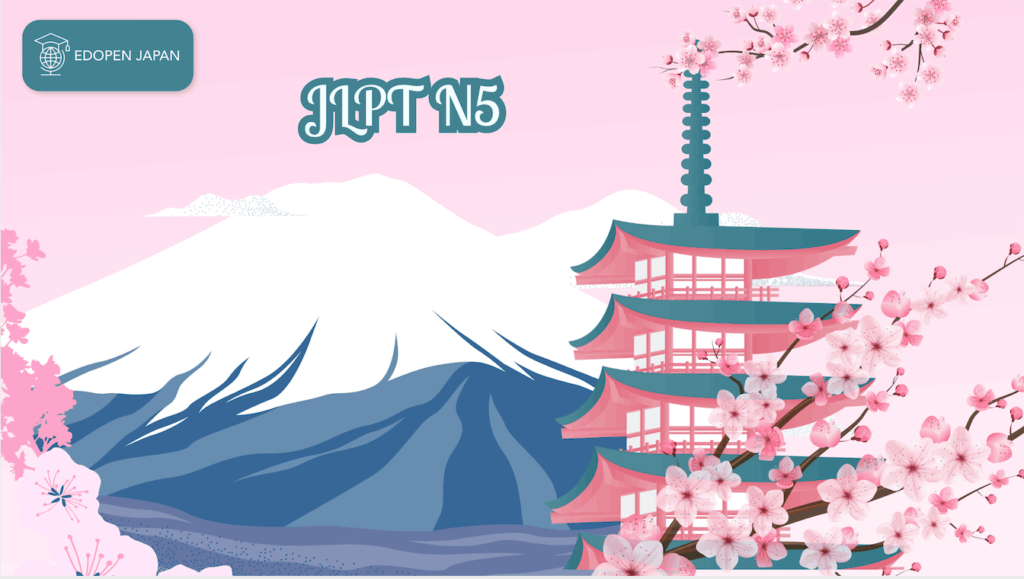
The JLPT N5 is the lowest level. At this level, test takers are expected to understand approximately 821 Japanese vocabulary words and 103 Kanji letters. In order to pass the test with a satisfactory score, test takers are expected to have studied Japanese for approximately 300 hours.
The JLPT N5 consists of three sessions with the following time requirements:
- Vocabulary in 20 minutes
- Grammar and reading in 40 minutes
- Listening in 30 minutes
Please also note that the JLPT N5 test duration has been shortened starting in 2020. Last year, the vocabulary section took 25 minutes and the grammar and reading sections took 50 minutes. The total score for all JLPT levels is 180. However, the passing standard for each level is different. For JLPT N5, the minimum score required to pass is 80.
It should also be noted that each test session also has a passing standard. This means that even if a candidate scores above 80, he or she will not necessarily be declared qualified if there is a session with a score below the passing standard.
For JLPT N5, the passing standard is bifurcated as follows:
- Vocabulary, grammar, and reading sessions: 38 (out of 120 total)
- Listening sessions: 19 (out of 60 total)
You could say that the standard wasn’t really that high! That is, if the test taker can answer at least about 50% of the total questions, the test taker is considered to have passed.
If you are studying Japanese in a specialized Japanese language school, and the material taught in the schools is more grammatical, students may find it easier to answer the grammar part during the JLPT N5 test. On the other hand, students who are unfamiliar with Kanji characters may find it difficult to answer vocabulary questions in Kanji form.
Finally, to wrap up this article, we would like to share that for people who are planning to come or study in Japan in the future, it is a super high must take the JLPT as soon as possible because it may take several attempts. Finally, we hope this article could help you find the most effective strategy to study and pass your JLPT exams. We wish you good luck!
See also:
Summary
- The JLPT is very important and highly recommended for your Japanese Language Certificate.
- JLPT N1 is the most difficult level and N5 is the easiest.
- It is highly recommended that you take JLPT N2 or higher before taking the exam to enter a Japanese university or apply for a job in a Japanese company.

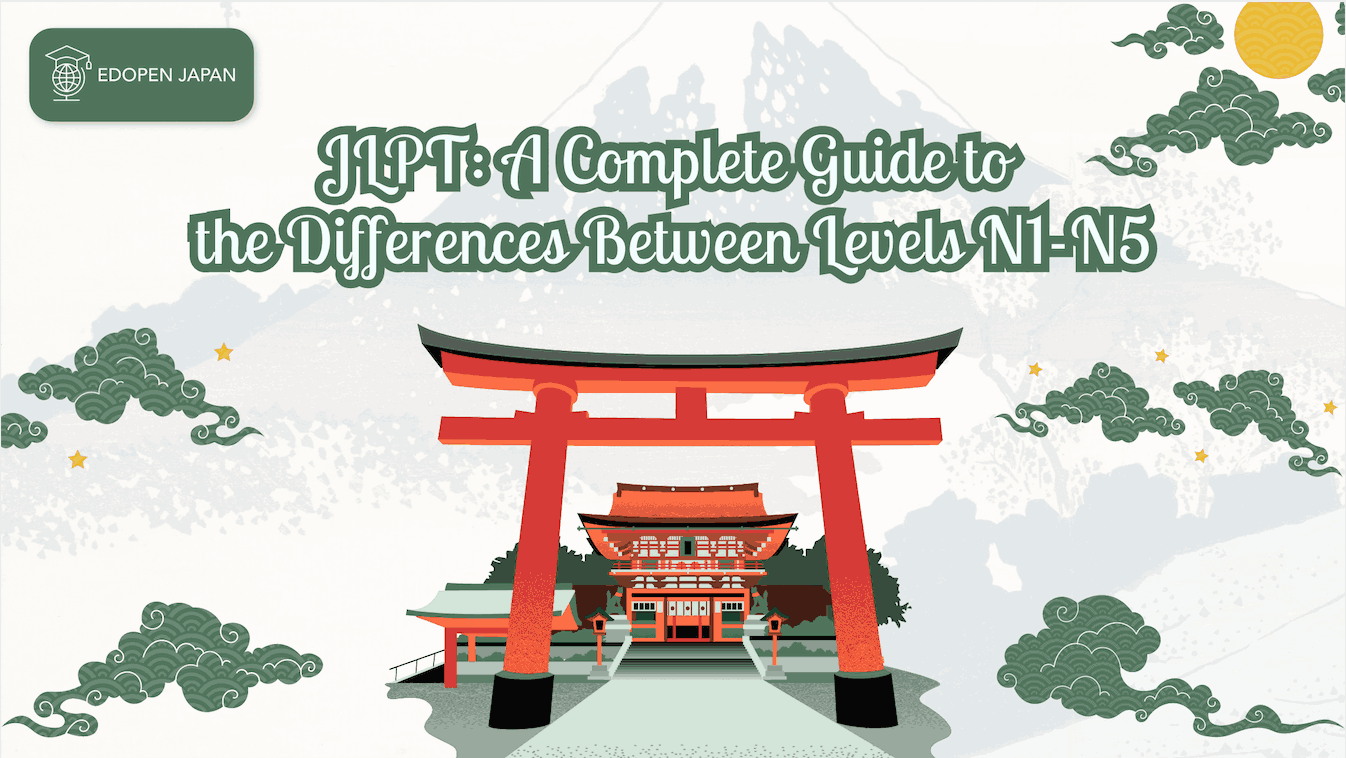




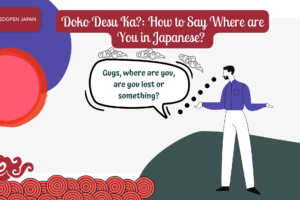






Leave a Reply